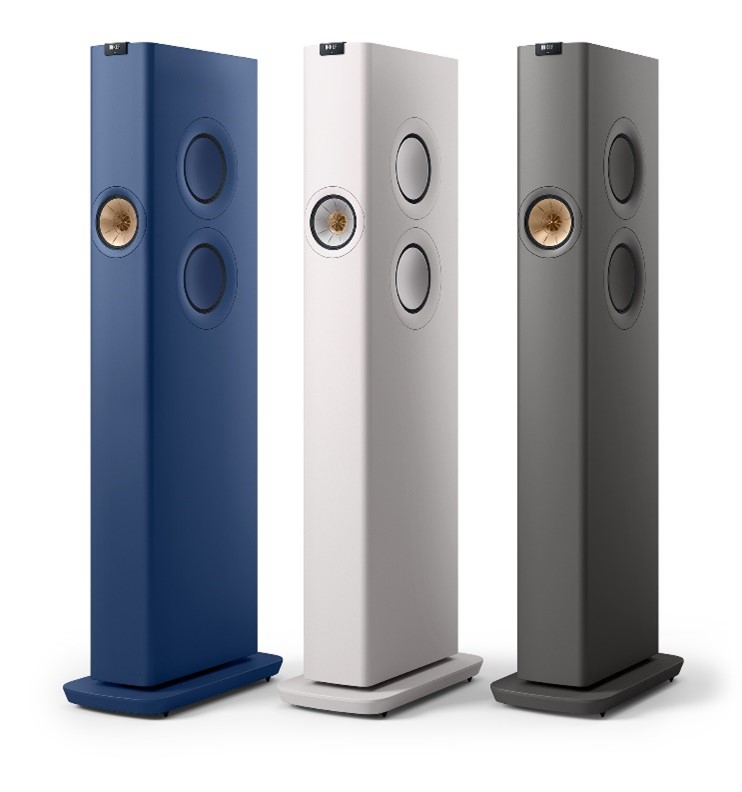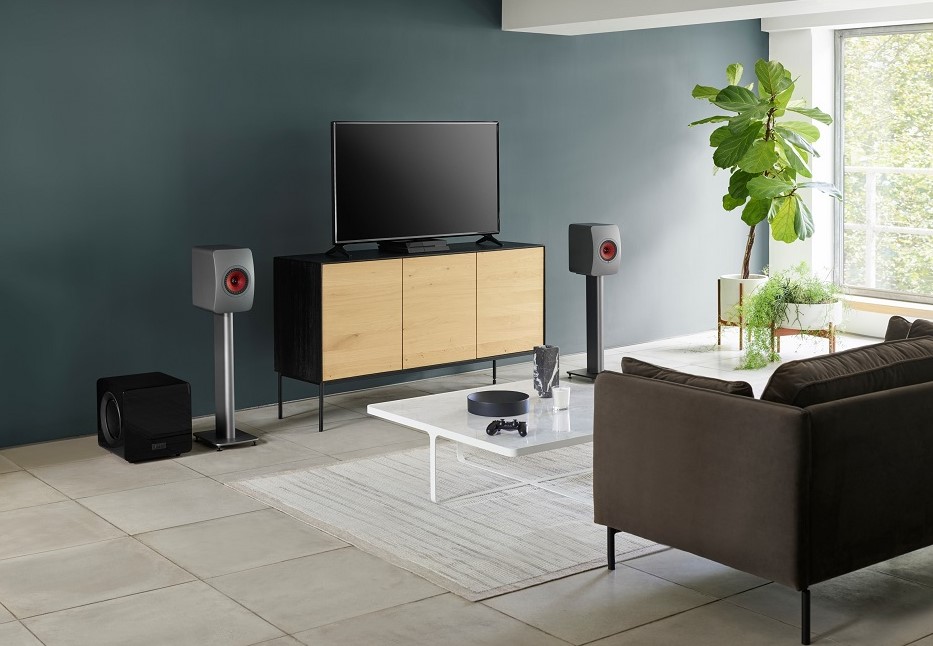
Every room is different, and every setup presents specific challenges to the loudspeaker’s performance. Through the incredible power of our DSP, you can adjust for certain room variances that would otherwise spoil the experience (or make it sound like any other run-of-the-mill active music system).
Any horizontal surface in front of a speaker changes the performance of the speaker at certain frequencies. The horizontal surface actually changes the virtual shape of the front baffle of the speaker, adding the horizontal surface to the geometry of the baffle. This changes the loudspeaker’s response in the critical frequency range centered at roughly 180 Hertz and going up and down about an octave from there.

If you are going to set up your LS Wireless speakers on a desk or tabletop with a horizontal surface in front of them, you’ll want to enable Desk Mode in the KEF Connect app. Basic Mode will ask you the distance from the driver (front of speaker) to the edge of the tabletop while Expert Mode will allow you to make the same adjustment using dB instead of distance. You can toggle between Basic and Expert to track the changes you’ve made in either distance or dB. Experiment with the setting to find the sound that suits your ears and your room the best.
The best hint is to experiment with each setting until you get the sound the way you want to hear it. Start at full attenuation (-6 dB) and go up in increments from there until you get your desk setup dialed in. This feature is available on the LS50 Wireless II and the LSX II.

Wall Mode
With a ported speaker, such as those in the LS Wireless family, the distance of the back of the speaker to the wall behind also affects the performance of the speaker at certain frequencies, most noticeable starting around 200 Hz and below. Bass energy tends to “pile up” behind the speaker, which gives you a little extra free bass energy at the price of a general muddying of the bass. You lose punch and articulation.
Start with the highest attenuation (-6 dB) and lessen the attenuation in increments from there until you find the setting that works best for you. Desk and Wall modes can be combined for an ultra-detailed Room EQ setting that perfectly matches your room and taste.
Treble Trim
The size, shape and contents of a room also have a strong effect on the performance of a speaker, particularly in the mid-range and upper-mids.
Some quick definitions for Basic Mode adjustment:
Damped is the setting for a room with a low ceiling, lots of fabric either on the walls or on the furniture, and carpeting on the floors, etc. (for example). This type of room will literally suck the life out of the upper mid frequencies causing your music to sound dull and lifeless. This is because the reflections that your ears interpret as “lively” are nullified by the room.
Moderate is the setting for a room that is somewhat acoustically neutral: there is some liveliness and bounce, but reverb is minimal, and most reflections are absorbed fairly quickly.
Lively is the setting for a room with high ceilings, lots of glass (either mirrors or windows with minimal treatments), hardwood floors and furniture without a lot of fabric (for example). In a lively room, the reflections are not dampened and tend to bounce around long after the initial signal has long since faded away. This causes confusion in your ears and an overall sense of inarticulation in your music.
Decide which of these settings is best for your room and then experiment with the slider to find the setting that works best for you.
Experiment
Take some time and experiment with each setting. You’ll eventually dial in a setting that is clearly more to your liking than any other setting. Don’t worry if you get things all out of whack, you can always just select the Default setting and start over.
By taking the time to dial in the Desk, Wall and Room EQ settings you’ll be able to get your KEF LS Wireless family speakers sounding as close to what our engineers designed as possible. Which in turn will get you as close as possible to hearing what the artist wanted you to hear.



